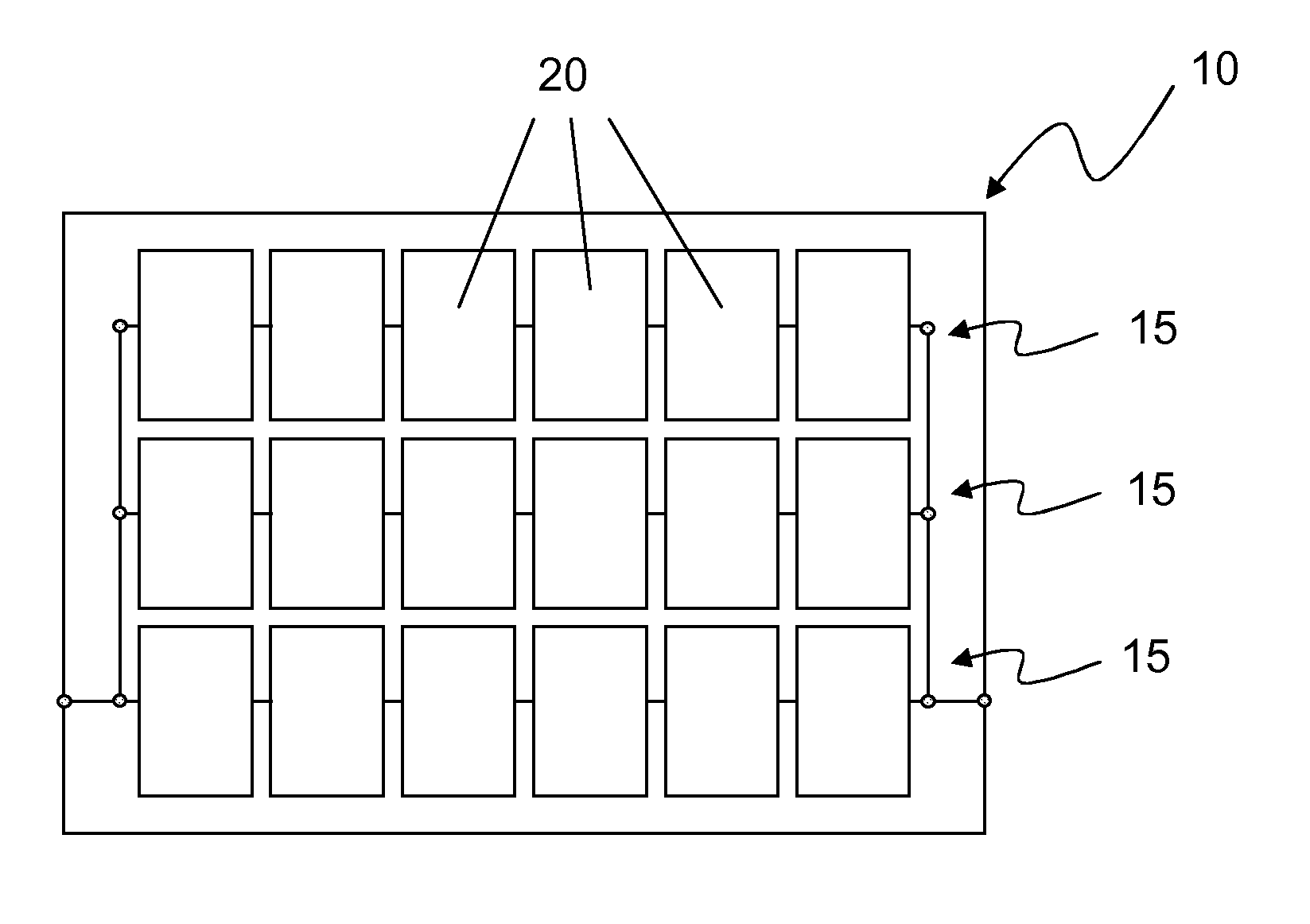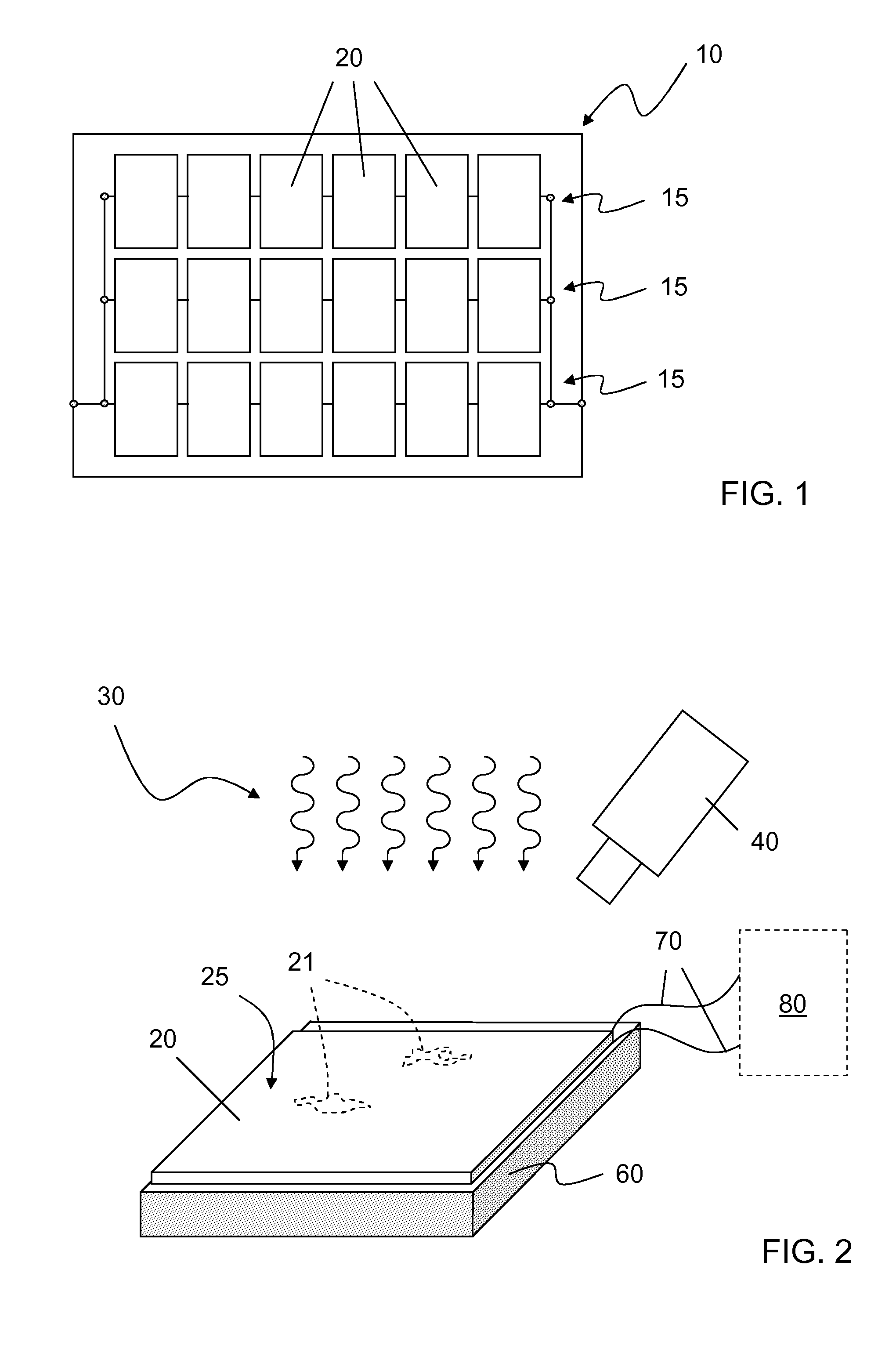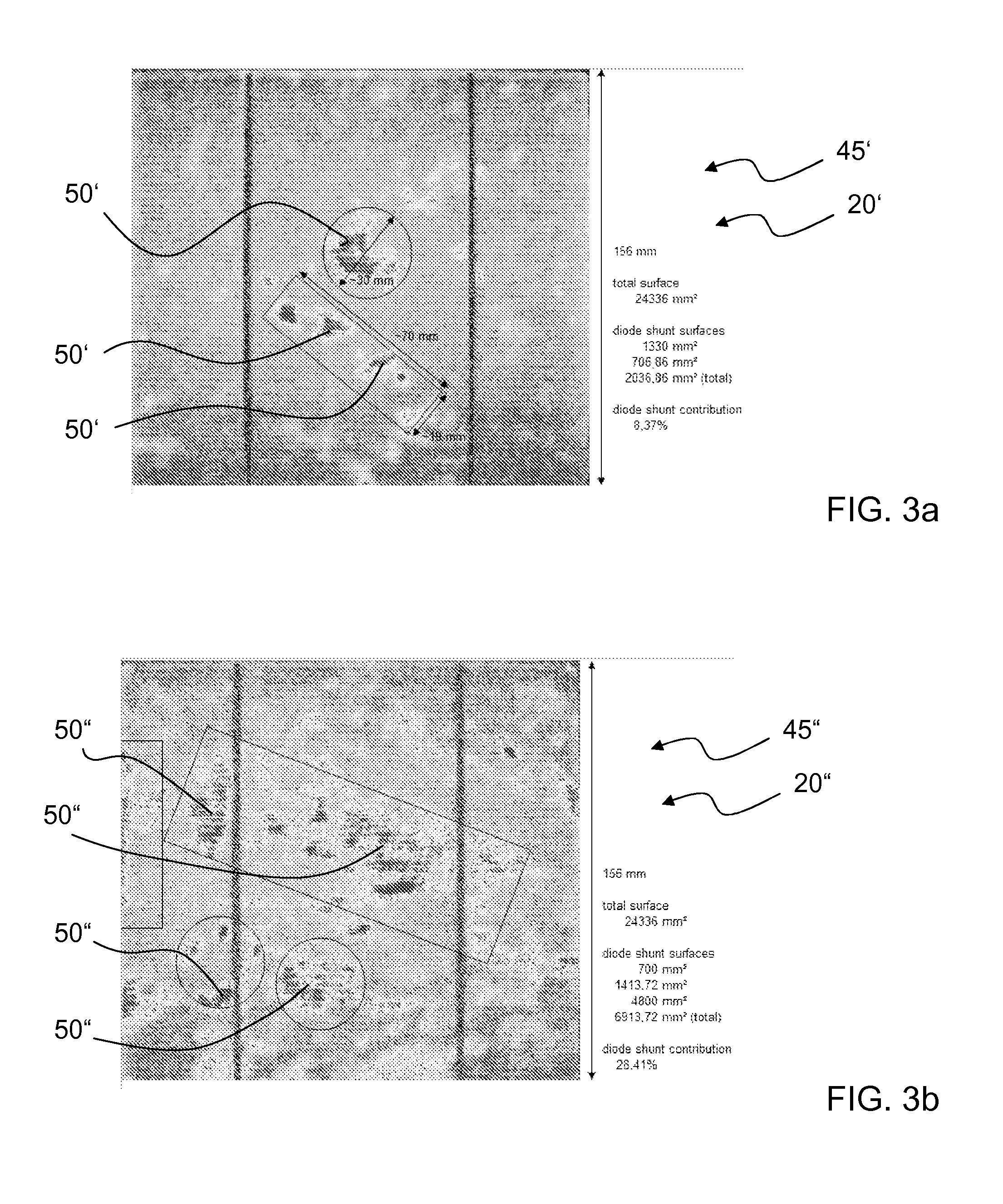Solar cell classification method
a solar cell and classification method technology, applied in semiconductor/solid-state device testing/measurement, fault location by increasing destruction at fault, etc., can solve problems such as mismatch of solar cells in photovoltaic modules at operating conditions, failure to meet high-performance applications and requirements, and failure to meet high-performance requirements
- Summary
- Abstract
- Description
- Claims
- Application Information
AI Technical Summary
Problems solved by technology
Method used
Image
Examples
Embodiment Construction
[0018]The present invention comprises an accurate and reliable classification method for solar cells which is based on IV curve measurements of the solar cells while also taking into consideration the solar cells' response to thermal stress, including a deterioration of performance at elevated temperatures. The present invention enables a reliable classification at the end of the solar cells' manufacturing process. FIG. 1 shows a schematic view of a photovoltaic module 10 containing a plurality of electrically interconnected solar cells 20. The cells 20 may be connected in series to achieve a desired output voltage and / or in parallel to provide a desired amount of current source capability. In the embodiment of FIG. 1, cells 20 are connected in series to form strings 15 which are in turn connected in parallel to form photovoltaic module 10.
[0019]If the cells 20 within module 10 differ with respect to their electrical characteristics, cells connected in series do not perform at their...
PUM
 Login to View More
Login to View More Abstract
Description
Claims
Application Information
 Login to View More
Login to View More - R&D Engineer
- R&D Manager
- IP Professional
- Industry Leading Data Capabilities
- Powerful AI technology
- Patent DNA Extraction
Browse by: Latest US Patents, China's latest patents, Technical Efficacy Thesaurus, Application Domain, Technology Topic, Popular Technical Reports.
© 2024 PatSnap. All rights reserved.Legal|Privacy policy|Modern Slavery Act Transparency Statement|Sitemap|About US| Contact US: help@patsnap.com










